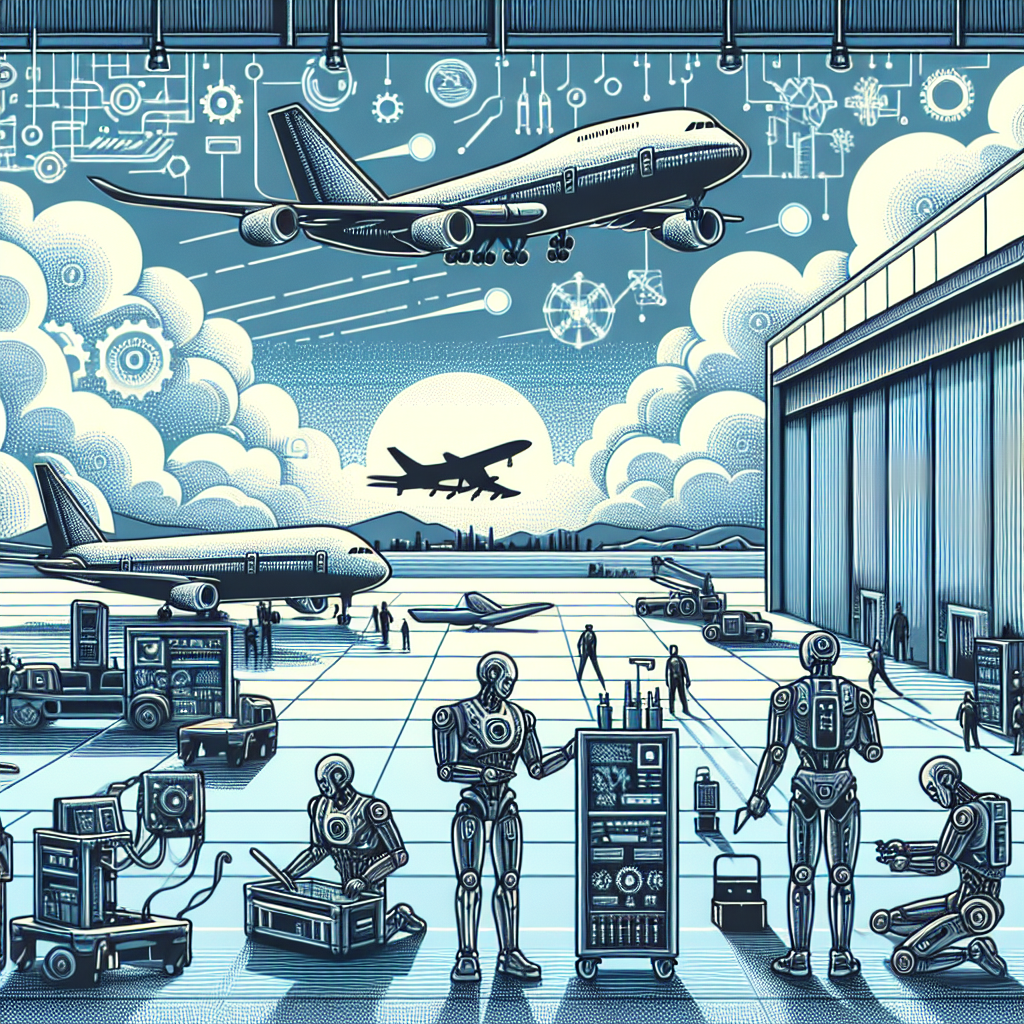In the aviation and aerospace industry, predictive maintenance plays a crucial role in ensuring the safety, reliability, and efficiency of aircraft and spacecraft. By leveraging artificial intelligence (AI) automation, organizations can enhance their predictive maintenance practices and optimize their operations. This article explores the benefits of using AI automation for predictive maintenance in the aviation and aerospace industry and addresses common questions about this technology.
Benefits of AI Automation for Predictive Maintenance
1. Improved Accuracy: AI algorithms can analyze vast amounts of data from sensors, historical maintenance records, and other sources to predict when equipment is likely to fail. This enables maintenance teams to proactively address issues before they escalate, leading to fewer unexpected breakdowns and lower maintenance costs.
2. Increased Efficiency: By automating the analysis of maintenance data, AI can help maintenance teams prioritize tasks, optimize schedules, and allocate resources more effectively. This can reduce downtime, improve asset utilization, and enhance overall operational efficiency.
3. Cost Savings: Predictive maintenance can help organizations avoid costly repairs, minimize unplanned downtime, and extend the lifespan of equipment. By leveraging AI automation, organizations can further reduce maintenance costs by streamlining processes and identifying opportunities for optimization.
4. Enhanced Safety: Predictive maintenance can help prevent equipment failures that could compromise the safety of aircraft, spacecraft, and their passengers. By using AI automation to predict and address maintenance issues proactively, organizations can improve safety outcomes and reduce the risk of accidents.
5. Data-Driven Insights: AI automation can analyze maintenance data in real-time to provide actionable insights and recommendations for maintenance teams. By leveraging these insights, organizations can make data-driven decisions, optimize maintenance strategies, and continuously improve their operations.
6. Scalability: AI automation can scale to handle large volumes of maintenance data and accommodate the complex needs of aviation and aerospace organizations. This scalability enables organizations to expand their predictive maintenance capabilities as their operations grow and evolve.
7. Competitive Advantage: By adopting AI automation for predictive maintenance, organizations can differentiate themselves in the competitive aviation and aerospace industry. This technology allows organizations to stay ahead of the curve, streamline their operations, and deliver superior maintenance services to their customers.
FAQs about AI Automation for Predictive Maintenance in Aviation and Aerospace
Q: How does AI automation enhance traditional predictive maintenance practices?
A: AI automation enhances traditional predictive maintenance practices by leveraging machine learning algorithms to analyze vast amounts of data and predict when equipment is likely to fail. This enables maintenance teams to proactively address maintenance issues, optimize their processes, and improve the accuracy and efficiency of their maintenance practices.
Q: What types of data can AI automation analyze for predictive maintenance in aviation and aerospace?
A: AI automation can analyze various types of data for predictive maintenance, including sensor data, historical maintenance records, maintenance logs, flight data, and environmental data. By combining and analyzing these data sources, organizations can gain a comprehensive view of their equipment health and predict maintenance issues before they occur.
Q: How can organizations integrate AI automation into their existing maintenance processes?
A: Organizations can integrate AI automation into their existing maintenance processes by partnering with AI solution providers, implementing AI-powered maintenance software, and training their maintenance teams on how to use AI tools effectively. By integrating AI automation into their processes, organizations can enhance their predictive maintenance capabilities and optimize their operations.
Q: What are the challenges of implementing AI automation for predictive maintenance in aviation and aerospace?
A: Some of the challenges of implementing AI automation for predictive maintenance in aviation and aerospace include data quality issues, data silos, lack of skilled AI talent, and resistance to change. Organizations must address these challenges by investing in data quality initiatives, breaking down data silos, training their workforce on AI technologies, and fostering a culture of innovation and continuous improvement.
Q: What are some best practices for leveraging AI automation for predictive maintenance in aviation and aerospace?
A: Some best practices for leveraging AI automation for predictive maintenance in aviation and aerospace include:
– Establishing clear goals and objectives for predictive maintenance initiatives
– Investing in high-quality data collection and management processes
– Collaborating with AI solution providers and industry partners
– Training maintenance teams on how to use AI tools effectively
– Monitoring and evaluating the performance of AI algorithms regularly
– Continuously optimizing and improving predictive maintenance processes based on data-driven insights
In conclusion, AI automation offers significant benefits for predictive maintenance in the aviation and aerospace industry, including improved accuracy, increased efficiency, cost savings, enhanced safety, data-driven insights, scalability, and a competitive advantage. By leveraging AI automation, organizations can optimize their maintenance practices, reduce downtime, and enhance the reliability and safety of their aircraft and spacecraft. By addressing common questions about AI automation for predictive maintenance, organizations can better understand the potential of this technology and make informed decisions about its implementation in their operations.

